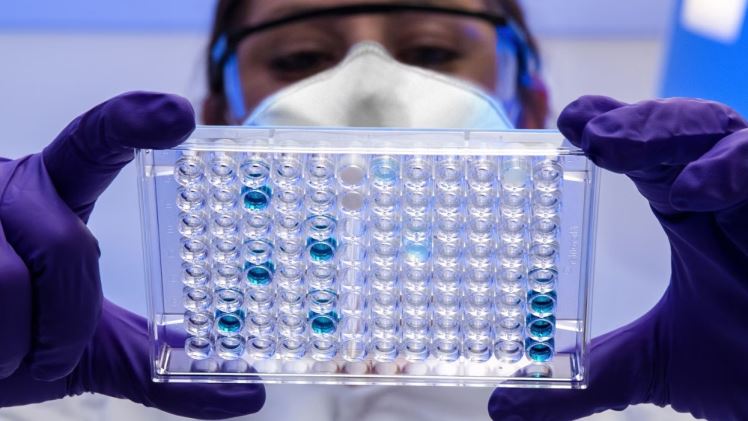Emerging Technologies for PFAS Remediation: Innovations in Environmental Cleanup

Per- and polyfluoroalkyl substances (PFAS) are a class of human-created chemicals prized for their remarkable properties. These substances boast exceptional resistance to water, grease, and stains. These properties make them attractive for a vast array of consumer goods and industrial applications.
However, their use has sparked concerns about the potential long-term effects of PFAS on the environment and human health. These chemicals have contaminated water sources, soil, and air across the globe. The growing body of research on PFAS exposure paints a concerning picture, linking it to a range of serious health problems.
These potential health effects include cancer, immune system dysfunction, and developmental issues, to name a few. In response to this critical concern, scientists and engineers have dedicated their efforts to developing innovative solutions for PFAS remediation.
In this blog post, we will delve into some of these promising advancements in environmental cleanup technologies.
PFAS and Emerging Lawsuits
One of the most significant sources of PFAS contamination is aqueous film-forming foam (AFFF). It is a fire-suppressing agent used by military and civilian firefighters.
AFFF contains high levels of PFAS, which seep into the groundwater and soil, posing serious health risks to nearby communities.
According to TruLaw, the unique chemical properties of PFAS make them exceptionally challenging to eliminate from the environment. Their strong carbon-fluorine bonds and water-repellent nature allow them to persist and spread.
Hence, traditional remediation methods, like activated carbon filtration, have not been successful in PFAS clean-up.
As the devastating impact of PFAS on human health becomes more apparent, a wave of AFFF lawsuits has emerged. Those impacted are pursuing legal recourse and financial reparations.
The need for effective PFAS remediation has never been more pressing.
Emerging Physical and Chemical Remediation Technologies
As the urgency to address PFAS contamination grows, researchers are exploring innovative physical and chemical remediation technologies for more effective and efficient cleanup. The following innovations aim to provide targeted solutions for removing PFAS from the environment.
Plasma-Based Technologies
Plasma-based technologies harness the power of high-energy electrons to break down PFAS molecules. Plasma-induced oxidation utilizes reactive species generated by plasma to chemically degrade PFAS. This converts the toxins into less harmful compounds.
Moreover, plasma-assisted catalysis combines plasma with catalytic materials to enhance the degradation process, making it more efficient and selective.
Advanced Oxidation Processes (AOPs)
Advanced Oxidation Processes, often abbreviated as AOPs, utilize a powerful approach to tackle PFAS contamination. These methods involve the creation of highly reactive molecules known as hydroxyl radicals, which effectively break down PFAS molecules.
In one of the processes, photocatalytic oxidation employs light-activated catalysts, such as titanium dioxide, to produce hydroxyl radicals that attack and degrade PFAS.
Electrochemical oxidation, on the other hand, uses electrical energy to generate oxidizing agents, such as ozone or hydrogen peroxide, which can effectively break down PFAS in contaminated water.
Novel Adsorption Materials
Adsorption has emerged as a promising approach for removing PFAS from water and soil. Functionalized activated carbon, modified with specific chemical groups, exhibits enhanced affinity and selectivity for PFAS molecules.
Imagine a material with a vast internal surface area, like a microscopic maze. This is the essence of metal-organic frameworks (MOFs). They also possess the ability to control the size of these pores. This unique combination of properties makes MOFs highly versatile solutions for PFAS cleanup.
While physical and chemical methods have shown promise in tackling PFAS contamination, another exciting frontier in remediation is harnessing the power of living organisms.
Emerging Biological Remediation Techniques
Bioremediation, phytoremediation, and enzymatic degradation are emerging as eco-friendly and cost-effective alternatives for cleaning up PFAS-polluted sites.
Bioremediation
This method utilizes microorganisms, like bacteria and fungi, to biodegrade PFAS contaminants. Scientists are at the forefront of this research, developing genetically modified bacteria with the specific ability to break down these persistent chemicals.
Fungal-based remediation is also showing potential, with certain species of fungi capable of transforming PFAS into less toxic compounds.
These bioremediation techniques offer a potentially eco-friendly solution for tackling PFAS contamination.
Phytoremediation
This technique, on the other hand, uses plants to absorb and accumulate PFAS from soil and water. Some plants, known as hyperaccumulators, have a natural ability to take up large amounts of contaminants.
Researchers are also exploring genetically engineered plants with enhanced PFAS uptake and degradation capabilities.
Enzymatic Degradation
Enzymatic degradation is another promising approach, using enzymes like laccase and peroxidase to catalyze the breakdown of PFAS. These enzymes can be produced by microorganisms or extracted from plants, offering a targeted and efficient means of remediation.
Benefits and Limitations
These novel approaches to PFAS remediation hold significant promise. They can:
- Enhance PFAS degradation efficiency.
- Minimize waste product generation.
- Potentially achieve complete mineralization of PFAS molecules.
- Some have low energy requirements (bioremediation).
However, these technologies also have their limitations.
- Potential byproduct formation
- Slower remediation rates (for biological techniques).
- Challenges in scaling up to field applications.
- Possible danger to the ecosystem from engineered organisms and plants.
The need of the hour is to develop methods that optimize performance and mitigate potential drawbacks. Utilizing these innovative methods, we can make significant progress in tackling PFAS remediation, safeguarding both human health and the environment.



